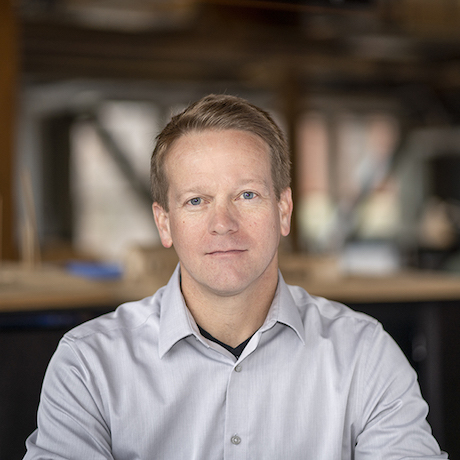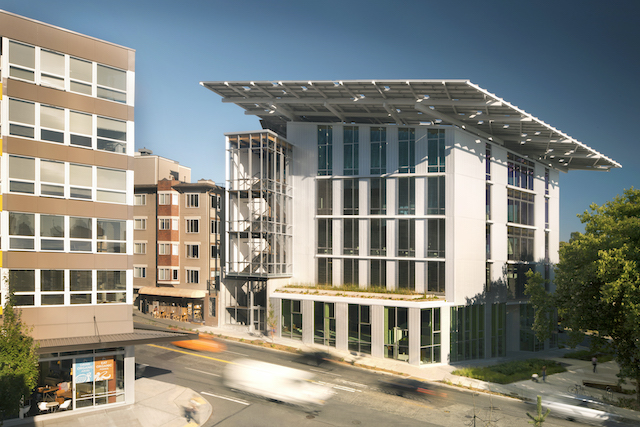Sustainability Inspired by History
Architect Brian Court ’96 shares his perspective on sustainable building design
March 11, 2022
By
Julia DeKorte ’23
What do the historic buildings in Colonial Williamsburg and some of the most technologically advanced buildings of today have in common? They’re both exceptionally environmentally friendly. That was one important lesson for Brian Court ’96, who built on his education at William & Mary to become one of the leading architects in sustainable design.
While William & Mary does not offer an architecture program, as a student, Court was able to work with W&M faculty and staff in the art and art history departments to create independent studies. These self-designed classes enabled him to put together a portfolio that later contributed to his acceptance into numerous graduate programs.

He attributes his foundational success to architect and Emeritus Senior Lecturer of Art Ed Pease, who taught design and drafting classes and later helped him design independent studies, and the late Professor Jim Kornwolf. Court worked with him on his three-volume history of American architecture, “Architecture and Town Planning in North America,” researching and drawing floor plans of Colonial buildings up and down the East Coast. Court then moved on to University of Washington, where he received his master’s degree in architecture. He loved the West Coast so much that he decided to set down roots there, and is now a partner at The Miller Hull Partnership.
So how did sustainability come into play? Well, the rise in carbon emissions is hard to ignore, Court says, citing information from the nonprofit Architecture 2030 showing that buildings are responsible for 40% of the world’s carbon emissions, with the most of those emissions coming from building operations. Transporting materials from around the world to a construction site is a significant contributor as well. This is where Court’s experience in Colonial Williamsburg comes in.
“The whole time I was at William & Mary, I was working for Colonial Williamsburg as well,” Court explains. “I was able to work in the brickyard making bricks from clay, and then I was able to work in the carpenter’s shed, so I was learning how to make shingles and saw logs into beams.”
Through his time at Colonial Williamsburg and his research with Professor Kornwolf on old American architecture, Court gained insight into a Colonial perspective on sustainability: “If you look at the buildings in Colonial Williamsburg and Colonial America, they were very sustainable. Oftentimes, they would dig a basement for a building and that basement excavation would provide the clay for the bricks to build the walls, and then you would find trees nearby, and everything was built from what you could find on-site.”
In addition to sourcing local materials, Court gets more inspiration from Colonial architects in the form of their energy use, or lack thereof. Colonial American buildings didn’t have electricity, so to allow for natural light and ventilation, the buildings were made very narrow with high ceilings. “In many ways,” Court says, “architects and engineers are trying to forget a lot of what they were taught in the 20th century and get back to this Colonial idea of a building that just needs less. Buildings need to carry their own weight. It’s rethinking architecture, and I think part of my success is attributable to starting with Colonial buildings that didn’t have any electricity.”
Court has carried this resolve to make buildings more energy and carbon efficient through all his projects. His favorite project is the Kendeda Building for Innovative Sustainable Design, a building on the campus of Georgia Tech. He explains that it is the first structure in the Southeast to earn Living Building Challenge certification, meaning it’s completely energy and water efficient, and doesn’t use any toxic materials in its construction. According to Court, it “operates as if it were a tree or a flower growing on a piece of land.” It only uses the water that falls on its roof. It is completely sustainable and sets up a framework for future sustainable building designs.

He’s also quite proud of his work on the Bullitt Center in Seattle, “a six-story building in the cloudiest city in the lower 48 states that’s completely solar powered.” It is designed to last 250 years and it is net-positive for energy and water, meaning it produces more energy through its solar panels and collects more rainwater than it needs to operate.
Currently, Court is working with the U.S. Department of State on designing new embassies in places such as Central America, Mexico and Africa, many of them in countries that do not have an electrical grid. Prior to Court’s involvement, the U.S. government planned to have fuel delivered on trucks to power the facilities, but instead, Court brought in his sustainable design plans and is using clean, solar-powered energy to power the embassies, reducing their carbon footprint and setting up budding countries with a sustainable value structure.
Court’s “strongest, most emphatic” piece of advice for anyone at William & Mary? “Spend as much time as you can studying abroad, in Europe or elsewhere.” His own experience studying abroad in Florence, Italy, greatly influenced his architectural career path, as the art and architecture in Florence is what really piqued his interest in drawing.
“Hopefully my path can help somebody else,” Court says in closing. If enough students and architects follow Court’s example, he may be able to actualize his vision for America: “We should be able to get all buildings in this country to a point where they’re not contributing to climate change. With solar panels and with a smart building design, all buildings can be net-zero and not draw carbon from the grid.”